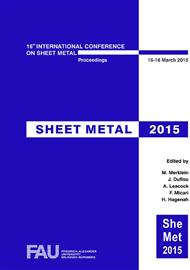p.71
p.77
p.83
p.91
p.99
p.107
p.115
p.123
p.131
Embossing of Metal Inserts for Subsequent Assembly Injection Moulding of Media Tight Electronic Systems
Abstract:
Due to the increasing number of electronics in several industrial sectors, especially in the automotive industry, there is a rising demand for flexible and adaptable electronic systems with high functional density and resilience. An efficient method for producing such parts is the encapsulation of metal inserts, for example lead frames, by means of assembly injection moulding. Often such parts are exposed to water and moist at the place of action. Thus, one major challenge is to provide electronics with enduring media tightness in a severe environment. The research work covered in this paper focuses on embossing surface structures in metal inserts for subsequent assembly injection moulding. The influence of geometrical parameters of the embossed profile on both the material flow and the accuracy of the created structure are investigated. For this purpose experimental as well as numerical results are presented. Furthermore, the performance of embossed inserts in subsequent assembly injection moulding is analysed.
Info:
Periodical:
Pages:
99-106
Citation:
Online since:
March 2015
Keywords:
Price:
Сopyright:
© 2015 Trans Tech Publications Ltd. All Rights Reserved
Share:
Citation:


